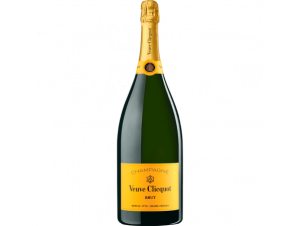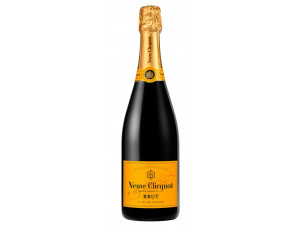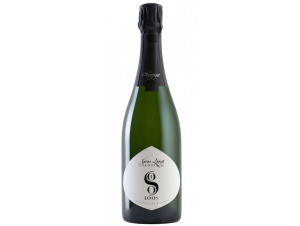You have no items in your shopping cart.
Champagne
Veuve Clicquot
(40 customer reviews)
Founded in 1772, the House of Clicquot found its definitive name when the founder's daughter-in-law, having lost her husband, changed the name to Veuve Clicquot in 1805. Just over two centuries later, the Champagne house is one of the most famous in the world, and reigns supreme in the Champagne region. Find out more
 Recommended by
Recommended byParker Wine Advocate - Wine Spectator - James Suckling
-

Shipped in
secured packaging - -16%
- -16%
- -21%
-

Garantie anti-casse :
Prise en charge totale
The winemaker
The incredible story of Barbe Clicquot Ponsardin, known as the widow Clicquot
La Veuve Clicquot. Now that's a very original and curious name for a Champagne house! In 1772, the House of Clicquot was founded by Philippe Clicquot, from a family of bankers and textile merchants. His ambition was to bring the production of his vines across borders, which he marketed through his négoce, whose name was simply Clicquot. His gamble paid off, and his first shipment of champagne was destined for Venice.
The house is taken over by his son, François, who dies prematurely. The year was 1805, and no woman was eligible to run a business. However, his 27-year-old widow, Barbe Clicquot Ponsardin, dared to claim the position. She became one of the first modern-day businesswomen, taking over the family business.
The daughter of a baron, the widow Clicquot benefited from a serious education, and her husband had time to pass on his passion for champagne. Bold and intelligent, she was uncompromising about production quality and possessed a keen business sense. She was also a trailblazer in the field of communications, which she handled with brio. Her archives contain over 100,000 letters sent and received, an average of 7,000 a year!
Veuve Clicquot is credited with the invention of the table de remuage, as well as the champagne rosé d'assemblage. She develops the trade worldwide, imposes her brand and her motto becomes: "Only one quality, the very first".
1877 was another milestone for Veuve Clicquot, with the introduction of the first yellow label. This new color became the brand's hallmark. In 1986, Veuve Clicquot joined the Louis Vuitton group, which became LVMH the following year.
The Veuve Clicquot vineyard in Champagne, with 86% of vines classified as Grands or Premiers Crus
Over the centuries, Veuve Clicquot growers have constantly enriched the estate. Today, it represents one of the most important Champagne vineyards, thanks not only to its 390-hectare surface area, but also its exceptional quality, with 12 of the 17 Grands Crus and 20 of the 44 Premiers Crus that Champagne boasts.
The nature of each plot's soil, as well as its exposure, decide the grape varieties. The proportions on the estate stand at 47% for chardonnay, 36% for pinot noir and 17% for pinot meunier. Most of the vines are located on hillsides, where the sunshine is at its best and the shallowness of the soil suits the vines to perfection. They benefit from the northern climate, which exposes them to winter and spring frosts, but whose moderate temperature and rainfall make for fine autumns conducive to crop quality.
The average annual temperature in Champagne is mild, around 10°C. The relief of the hillsides compensates for the sometimes limited exposure to the sun. Regular but moderate rainfall brings freshness to the raisin.The chalky subsoil is ideal for vines.They draw their strength from a poor substrate that allows natural regulation of heat and humidity. This geologically exceptional environment creates powerful flavors, with mineral notes inseparable from the finest champagnes.
More than a hundred vignerons work on production for the house of Veuve Clicquot. They are supported by dozens of seasonal workers who come to lend a hand during the harvest, but also for the many manual viticultural tasks throughout the year.
Veuve Clicquot champagne of excellence
Veuve Clicquot champagne follows strictly regulated production methods, with a limited yield per hectare to guarantee the highest quality.
Veuve Clicquot Champagne Brut Carte Jaune
Champagne Veuve Clicquot Brut Carte Jaune is the result of a blend of reserve wines bringing together between 50 and 60 different crus. With its instantly recognizable yellow label, it is the house's emblematic champagne. Produced mostly with pinot noir to forge its structure, it benefits from the elegance of chardonnay for a small third and the rest pinot meunier. Veuve Clicquot Brut Carte Jaune Champagne requires a minimum of three years maturing in the crayères, to achieve all the silkiness that has made it such a success worldwide.With its unrivalled aromatic intensity and intense freshness, Veuve Clicquot Brut Carte Jaune champagne is perfect for the aperitif. Its beautiful yellow color and fine bubbles also complement the meal. Its fruity aromas of peach and pear, as well as its vanilla and brioche flavors, are the perfect accompaniment to fish tartar, salmon and all seafood dishes. It is also sublimated by fresh pasta, cooked al dente and garnished with Parmesan.
Veuve Clicquot Rosé Champagne
It's impossible to talk about this house without mentioning Veuve Clicquot Rosé champagne, since it was Madame who first perfected it in 1818. It's renowned for its vivacity and explosive fruit aromas. Veuve Clicquot Rosé champagne is made from a blend containing 50 to 60 different crus.As its structure is based on the style of the Brut Carte Jaune version, it borrows similar proportions, although the pinot noir falls below the 50% mark and remains between 44 and 48%. Chardonnay accounts for between a quarter and a third, and Pinot Meunier rounds out this premium blend with 13% to 18%. Champagne Veuve Clicquot Rosé boasts a coppery-orange color. Its expressive nose reveals explosive aromas of red fruits, with very ripe strawberries and wild strawberries. With its fresh, full-bodied mouth, it's well suited to beef carpaccio, duck and tomato and tuna salads. Of course, it's also perfect as an aperitif!

22 wines available
between 32 € and 448 €
between 32 € and 448 €

372 wine's scans
on Twil application
on Twil application

Best rated wines on Twil :
You might like Voir tous les vins de la région
- -26%
- -26%
- -15%
- -26%












































 TWIL - Achat de Vin
TWIL - Achat de Vin


